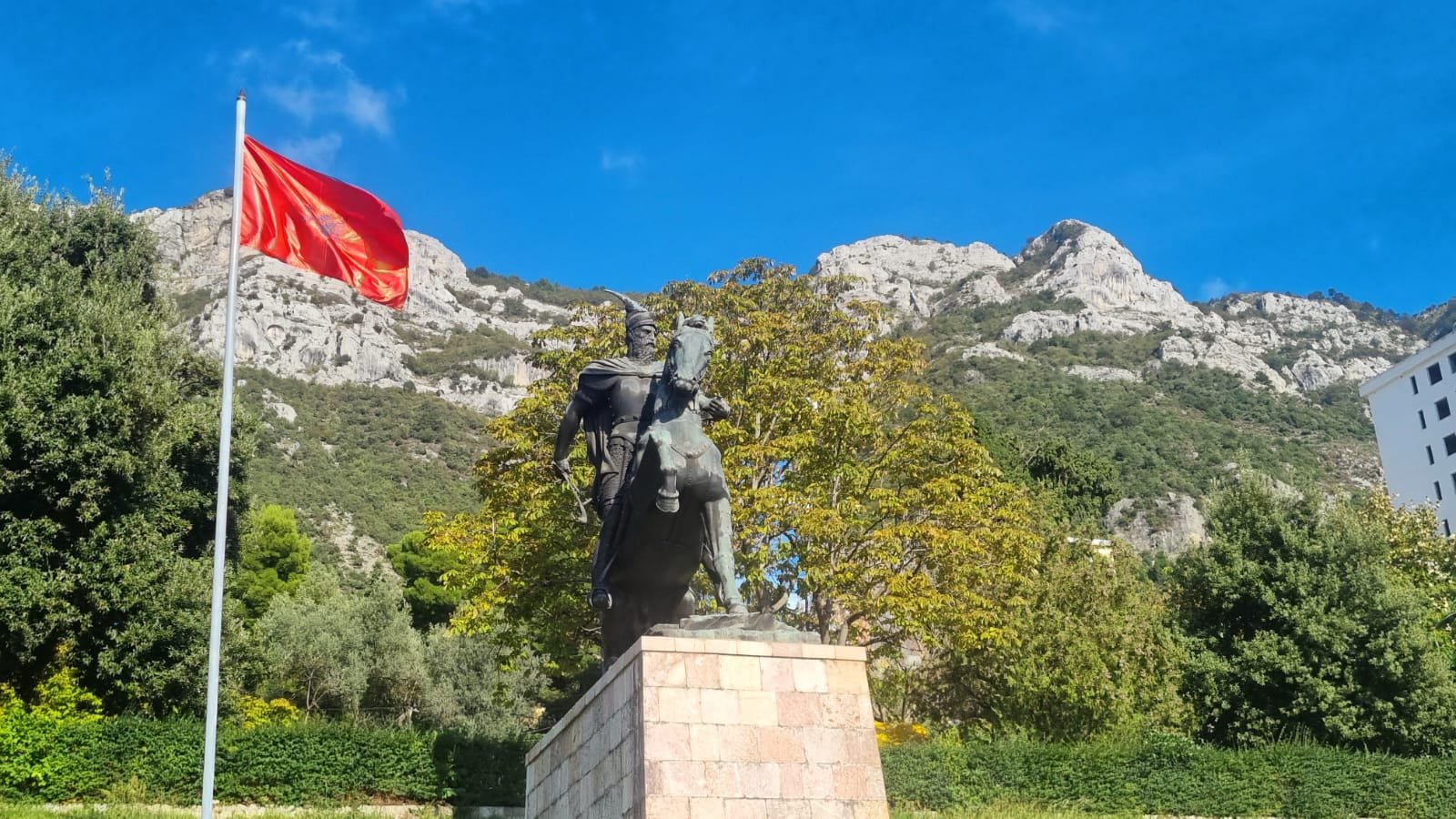Skanderbeg’s Legacy: A Journey to Kruja Castle
Our recent trip to Tirana, Albania, was nothing short of a historical deep dive. For those of you who love historical wargaming, especially from the medieval era, you’ll understand the thrill of visiting a place so steeped in the past.
Kruja Castle, Near Tirana, Albania.
The highlight of our trip was visiting Kruja Castle, a fortress that dates back to the 5th or 6th century, but which gained prominence in the 15th century as the stronghold of Albania's national hero, Gjergj Kastrioti—better known as Skanderbeg. Skanderbeg’s resistance against the Ottoman Empire is legendary, and the castle became the center of his rebellion. Standing within those ancient walls, you can almost feel the echoes of history—the battles fought, the Ottoman sieges repelled, and the strategic brilliance of a leader who stood against overwhelming odds.
Skanderbeg, born in 1405, was originally a nobleman in the Ottoman army but famously defected and united various Albanian clans to fight for independence. Between 1443 and his death in 1468, he led a successful guerrilla campaign against the Ottomans, earning a reputation as one of the greatest military leaders in Europe. His use of hit-and-run tactics, deep knowledge of the terrain, and effective unification of Albanian forces were key to his success. Kruja Castle, perched high on a rocky hill, became the symbol of his defiance and was besieged multiple times by Ottoman forces, each time repelling them until after Skanderbeg’s death.
For a wargamer, Skanderbeg’s tactics offer fascinating material. His ability to harness both conventional and unconventional warfare, leveraging terrain and small, mobile forces, makes for an interesting army list in any medieval wargame.
Gjergj Kastrioti—better known as Skanderbeg
Kruja Castle, perched atop a rugged hill overlooking the town of Kruja, is one of the most significant historical landmarks in Albania.
The castle’s origins date back to the 5th or 6th century, when it was constructed during the Byzantine period. Over the centuries, it was expanded and fortified, becoming a key military stronghold in northern Albania. Kruja's location made it a critical point for controlling access to the interior of Albania, particularly the fertile plains surrounding the region.
By the time of Skanderbeg’s rebellion in the 1440s, Kruja Castle was a formidable fortress. With steep cliffs on multiple sides and limited access routes, the castle was well-suited for withstanding sieges, making it a perfect base for Skanderbeg’s military operations.
Walking the ground gave a real feel for how tough it would've been to besiege the castle
Skanderbeg’s resistance against the Ottoman Empire began in 1443 when he defected from the Ottoman army and returned to Albania to rally his people. He united various Albanian clans and established Kruja Castle as the heart of his rebellion. From this stronghold, Skanderbeg led a series of successful campaigns against the Ottoman forces, frustrating their attempts to conquer Albania.
Kruja Castle was besieged multiple times during Skanderbeg’s campaigns, with the Ottomans launching three major assaults between 1450 and 1467. Despite being vastly outnumbered, Skanderbeg’s forces repelled each siege, largely thanks to the castle’s defensive design and his tactical brilliance. The fortress became a symbol of Albanian resilience, as Skanderbeg used a combination of guerrilla warfare, ambushes, and defensive strategies to hold off the far larger Ottoman forces.
One of the most famous sieges occurred in 1450, when Sultan Murad II sent a large army to capture Kruja. Skanderbeg’s forces, though heavily outnumbered, managed to hold out for months, inflicting heavy losses on the Ottoman army. The Ottomans eventually retreated, marking one of the most significant victories of Skanderbeg’s resistance.
The bazaar near Kruja Castle
After exploring the rich history of Kruja Castle, we took a break to enjoy some food and drinks at a charming restaurant nestled within the castle walls. The atmosphere was incredible—sitting in such a historic setting, with stunning views of the surrounding hills and valleys, made it feel like we were truly stepping back in time. The traditional Albanian dishes, like byrek and grilled lamb, were packed with local flavors, and the hospitality was warm and welcoming. Afterward, we wandered through the ancient bazaar in the town below the castle. The narrow, cobblestone streets were lined with stalls selling handmade crafts, carpets, and spices. The mix of vibrant colors, fragrant herbs, and the sound of local artisans created an unforgettable sensory experience, perfectly capturing the spirit of old Albania.
In the end, our trip to Kruja was much more than just a historical journey—it was an immersion into the heart of Albania’s rich culture and legacy. From the formidable walls of Kruja Castle, where Skanderbeg once defied an empire, to the bustling bazaar filled with the sights and smells of a proud heritage, the experience was nothing short of unforgettable. As I begin the process of crafting a 15mm Albanian army for Art de la Guerre, I’ll be carrying with me the stories, landscapes, and inspiration drawn from this incredible place. It's a reminder of how history can come alive, not only in books or museums but also through the miniatures we create and the battles we reenact on the tabletop. I can’t wait to bring the spirit of Kruja into my next game.
Thanks For reading
Matt










